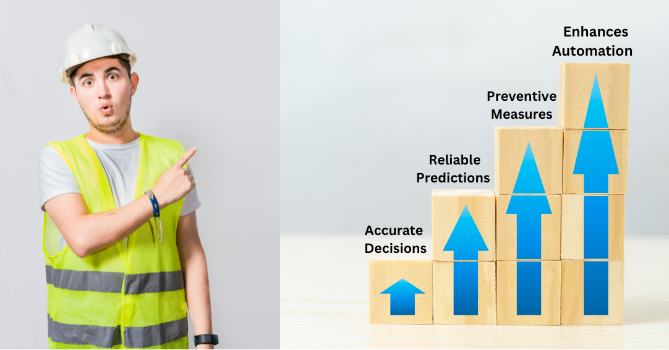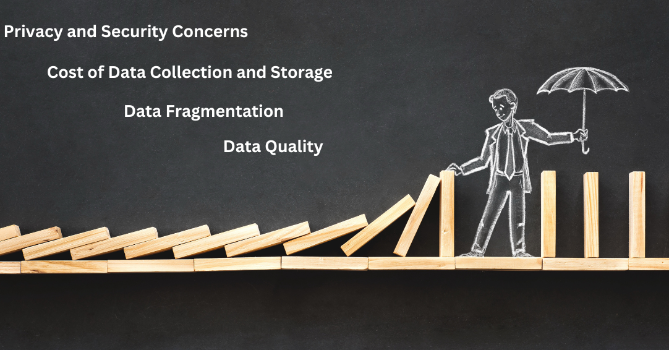.png)
Data Drives Decisions: The Importance of Training Data for AI in Construction
Introduction
Artificial Intelligence (AI) is changing the way we build. In the construction industry, AI helps make smarter decisions, saves time, and reduces costs. But AI is only as good as the data it learns from. This is where training data comes in.

Training data is a collection of information that teaches AI systems how to perform tasks. In construction, this could be anything from blueprints and material costs to project timelines and safety records. Without high-quality training data, AI systems can’t make accurate predictions or automate tasks effectively.
Imagine trying to build a house without a solid foundation. The same goes for AI—without reliable training data, the system will not perform well. This blog will explore why training data is so important for AI in construction and how it can help drive better decisions and improve project outcomes.
Stay with us as we dive deeper into this crucial topic.
Understanding Training Data in AI
Training data is the backbone of any AI system. It’s the information that AI uses to learn how to perform specific tasks. In construction, training data can include a wide range of details—like past project schedules, cost estimates, safety records, and even weather patterns. This data helps AI make predictions, identify risks, and optimize processes.

For AI to work well, the quality of the training data is crucial. If the data is inaccurate or incomplete, the AI system can make mistakes. For example, if an AI model is trained on outdated cost data, it might give a wrong budget estimate, leading to financial losses. On the other hand, good training data helps AI make precise predictions, such as forecasting project delays or identifying potential safety hazards before they occur.
In construction, the use of training data goes beyond simple predictions. It helps automate routine tasks, like scheduling and material management, making the entire process more efficient. By learning from a wide array of data, AI can offer insights that humans might overlook, leading to better decision-making and increased project success rates.
Training data is not just about numbers and facts; it's about teaching AI to think and act smarter. This is why it's essential to have diverse, accurate, and comprehensive data to train AI models effectively in the construction industry.
The Role of BIM and AI Integration
Building Information Modeling (BIM) and AI are a powerful combination in construction. BIM is a digital representation of a building's physical and functional characteristics. It provides a detailed 3D model that helps in planning, design, and management throughout a building's life cycle. When AI is integrated with BIM, it takes these capabilities to the next level.
AI uses the rich data from BIM models to make smart predictions and decisions. For example, AI can analyze a BIM model to detect potential clashes between different building systems, like plumbing and electrical. This helps avoid costly errors before construction even begins. AI also uses BIM data to predict project timelines and optimize material usage, saving both time and money.
By combining BIM with AI, construction teams can automate many complex tasks and improve efficiency. AI enhances BIM’s ability to provide real-time updates and insights, making project management smoother and more accurate. This integration leads to smarter construction practices, reduced risks, and better project outcomes. Together, BIM and AI are transforming the way buildings are designed, constructed, and managed, leading to a more innovative and efficient industry.
Benefits of High-Quality Training Data in Construction AI
High-quality training data is essential for AI systems in construction to perform well. It provides the foundation for AI to learn and make accurate decisions. When the data is accurate, diverse, and comprehensive, AI can deliver several key benefits to the construction industry.

First, high-quality data improves the accuracy of AI predictions. This means better forecasts for project timelines, cost estimates, and risk assessments. With reliable predictions, construction teams can plan better and avoid unexpected delays and expenses. For example, AI can analyze weather patterns and adjust schedules to prevent weather-related disruptions.
Second, good training data helps AI identify potential safety hazards before they happen. By learning from past incidents and near-misses, AI can suggest preventive measures, reducing accidents on site. This not only protects workers but also minimizes project downtime due to safety issues.
Third, quality data enhances automation. AI can automate repetitive tasks like scheduling, resource allocation, and progress tracking. This frees up human workers to focus on more complex, value-added tasks. Automation also ensures that these tasks are done consistently and efficiently, reducing errors and saving time.
In summary, high-quality training data empowers AI to improve safety, efficiency, and decision-making in construction. It helps teams work smarter, not harder, leading to better project outcomes and a more resilient industry.
Challenges in Collecting and Using Training Data
Collecting and using training data for AI in construction comes with its own set of challenges. One major issue is data fragmentation. Data often comes from multiple sources—such as blueprints, project schedules, and supplier records—which can be stored in different formats and locations. This makes it hard to gather and standardize data for AI training.

Another challenge is data quality. If the data is incomplete, outdated, or incorrect, it can lead to poor AI performance. For example, inaccurate cost data might cause an AI system to make wrong budget predictions, leading to financial overruns. Ensuring data quality requires constant updates and checks, which can be time-consuming and costly.
Privacy and security concerns also pose challenges. Sensitive information, like employee records or project plans, must be handled carefully to avoid breaches. Construction companies need to implement strict data governance policies to protect their data while still allowing AI systems to access and learn from it.
Lastly, the cost of data collection and storage can be high. Gathering large volumes of data and storing it securely requires significant investment in technology and infrastructure. These challenges highlight the importance of developing a robust strategy for data management to fully harness AI’s potential in construction.
Future Trends: AI, Data, and Automation in Construction
The future of construction is increasingly data-driven, with AI and automation at the forefront. One emerging trend is the use of digital twins—virtual models of buildings that mirror their real-world counterparts. AI can analyze these digital twins to predict maintenance needs, optimize energy use, and enhance building performance.

Another trend is the rise of AI-driven robotics. Robots equipped with AI are being used for tasks like bricklaying, demolition, and site inspections. These robots can work continuously, reduce human error, and improve safety by handling dangerous tasks.
Automation is also expanding beyond physical tasks. AI is being used to automate scheduling, budgeting, and supply chain management. This reduces administrative burdens and ensures projects stay on track and within budget.
Finally, predictive analytics powered by AI is set to become a standard tool in construction. By analyzing vast amounts of data, AI can forecast potential risks, project delays, and cost overruns before they occur, enabling teams to take proactive measures.
These trends show that AI, data, and automation are not just transforming construction practices today—they are setting the stage for a smarter, safer, and more efficient future in the industry.
Conclusion
AI is revolutionizing the construction industry, but its effectiveness depends on high-quality training data. Good data enables AI to make accurate predictions, enhance safety, and streamline operations, leading to better project outcomes. However, challenges like data fragmentation, quality issues, and high costs must be addressed to fully realize AI's potential.
As the industry evolves, integrating AI with tools like BIM, adopting digital twins, and embracing automation will become increasingly important. By investing in quality data and advanced technologies, construction companies can stay ahead of the curve, ensuring safer, more efficient, and more innovative building practices for the future. Embracing these changes now will pave the way for smarter, data-driven decision-making in construction.